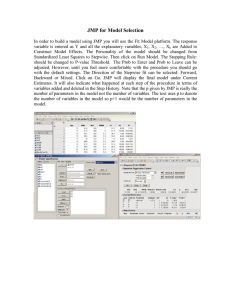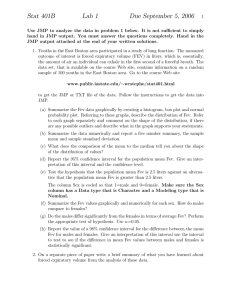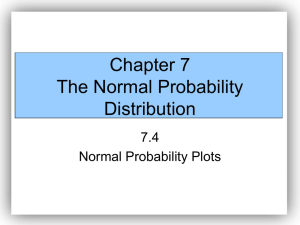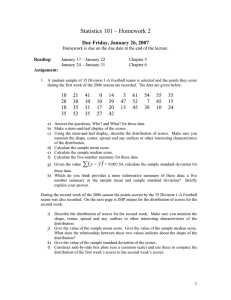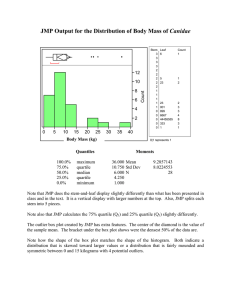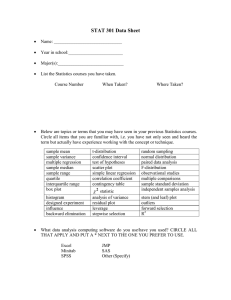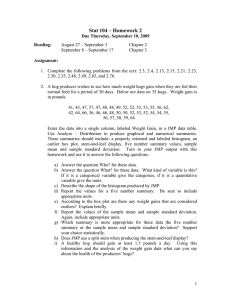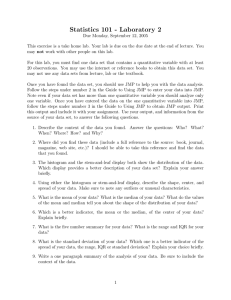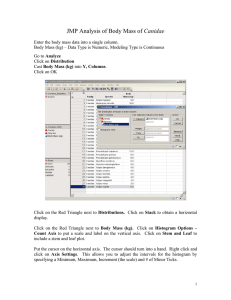Stat 301 Lab 7: Due October 27 Fall 2014
advertisement
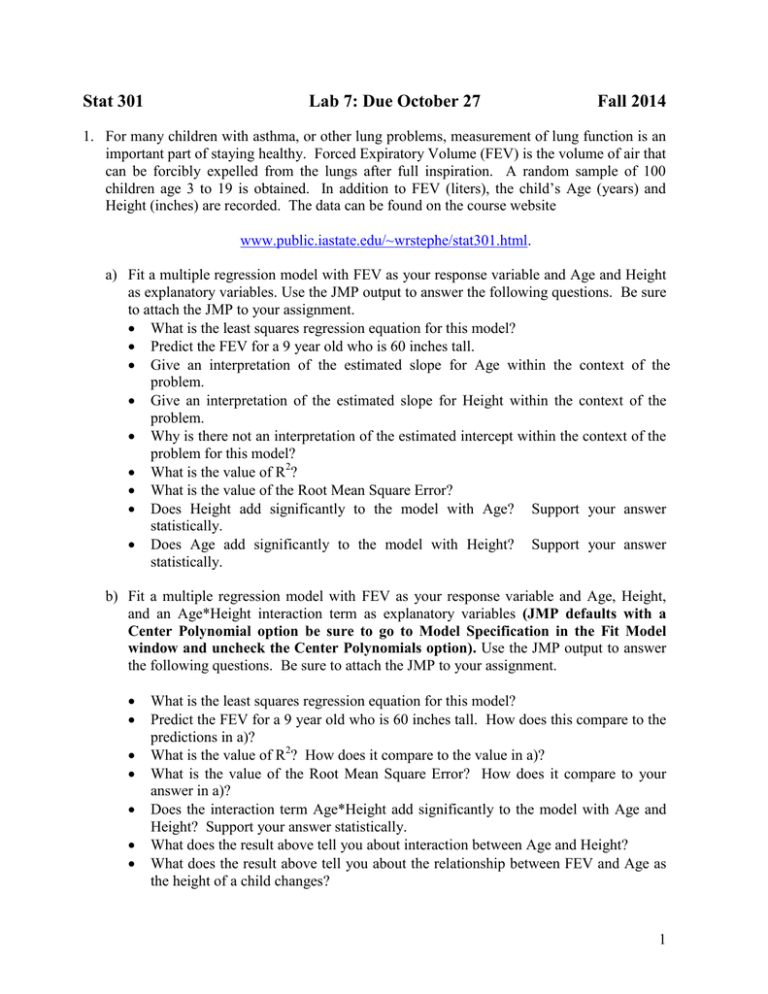
Stat 301 Lab 7: Due October 27 Fall 2014 1. For many children with asthma, or other lung problems, measurement of lung function is an important part of staying healthy. Forced Expiratory Volume (FEV) is the volume of air that can be forcibly expelled from the lungs after full inspiration. A random sample of 100 children age 3 to 19 is obtained. In addition to FEV (liters), the child’s Age (years) and Height (inches) are recorded. The data can be found on the course website www.public.iastate.edu/~wrstephe/stat301.html. a) Fit a multiple regression model with FEV as your response variable and Age and Height as explanatory variables. Use the JMP output to answer the following questions. Be sure to attach the JMP to your assignment. What is the least squares regression equation for this model? Predict the FEV for a 9 year old who is 60 inches tall. Give an interpretation of the estimated slope for Age within the context of the problem. Give an interpretation of the estimated slope for Height within the context of the problem. Why is there not an interpretation of the estimated intercept within the context of the problem for this model? What is the value of R2? What is the value of the Root Mean Square Error? Does Height add significantly to the model with Age? Support your answer statistically. Does Age add significantly to the model with Height? Support your answer statistically. b) Fit a multiple regression model with FEV as your response variable and Age, Height, and an Age*Height interaction term as explanatory variables (JMP defaults with a Center Polynomial option be sure to go to Model Specification in the Fit Model window and uncheck the Center Polynomials option). Use the JMP output to answer the following questions. Be sure to attach the JMP to your assignment. What is the least squares regression equation for this model? Predict the FEV for a 9 year old who is 60 inches tall. How does this compare to the predictions in a)? What is the value of R2? How does it compare to the value in a)? What is the value of the Root Mean Square Error? How does it compare to your answer in a)? Does the interaction term Age*Height add significantly to the model with Age and Height? Support your answer statistically. What does the result above tell you about interaction between Age and Height? What does the result above tell you about the relationship between FEV and Age as the height of a child changes? 1 c) Save the residuals from the model that has Age, Height and the Age*Height interaction term. Plot the residuals versus Height. Be sure to attach this plot to your assignment. What does the plot of residuals versus Height tell you about the common standard deviation condition? Be sure to support your answer by referring to the plots. What does the plot of residuals versus the Height tell you about the precision of the predictions for children of differing heights? d) Analyze the distribution of the residuals. Use the JMP output to answer the following questions. Be sure to attach the JMP to your assignment. Are there any potential outliers? If so, give the Age, Height and FEV of the associated children. What does this indicate about the identically distributed condition on the errors? If any potential outliers are ignored, what can you say about the condition of normally distributed errors? Support your answer by referring to the Normal Quantile Plot, Box Plot and Histogram. e) Instead of an interaction model with Age and Height, consider a quadratic model using Height for explaining variation in the FEV of children. Fit a polynomial model with explanatory variables Height and Height2 (JMP defaults with a Center Polynomial option be sure to go to Model Specification in the Fit Model window and uncheck the Center Polynomials option). Use the JMP output to answer the following questions. Be sure to attach the JMP to your assignment. What is the least squares regression equation for this model? Predict the FEV for a 9 year old who is 60 inches tall. How does this compare to the predictions in b)? What is the value of R2? How does it compare to the value in b)? What is the value of the Root Mean Square Error? How does it compare to your answer in b)? Does the quadratic term Height*Height add significantly to the model with Height? Support your answer statistically. 2
